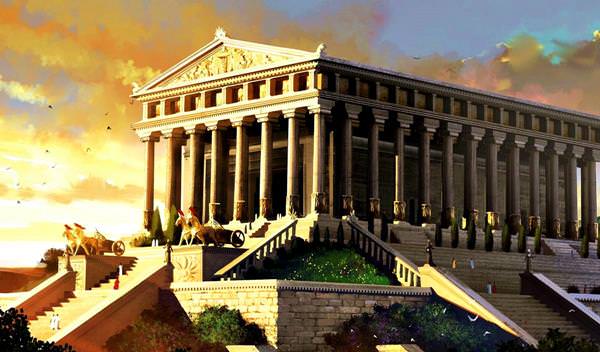Temple of Artemis at Ephesus
Situated in Ephesus, Temple of Artemis was one of the ancient world's most beautiful temples. Ephesus was a very old Greek city which lies in what's today southwest Turkey's Selcuk.
The temple itself was built in dedication to the goddess Artemis, connected with the Roman Diana goddess, which in turn explains why the temple is sometimes called the Temple of Diana.
Moreover, the temple is now regarded quite highly as one of the ancient world's 7 wonders. Keep reading and you'll learn much more through my list of 7 top facts on the Temple of Artemis at Ephesus.
1. Why was so significant about the Goddess Artemis?
Not only was Artemis a Greek goddess but also Zeus's granddaughter and Apollo's twin sister. She was specifically the goddess of the wilderness, untamed animals, the hunt, chastity, the moon, and the Roman version was her equivalent.
In addition, Artemis was a very honored goddess in ancient Greece; the stunning temple which was constructed for her proves how honored she was.
2. A flood destroyed the temple
The temple's initial version was actually a peripteral temple, and perhaps the first one of its types to be made in Greece.
But a flood destroyed the temple in 7th century BC, leaving it in ruins for a period lasting about 150 years.
3. The 2nd temple was built much larger
The reconstruction of the temple began in 550 BC and was completed within 10 years. It was really the first Greek temple to be erected using marble.
However, the Temple of Artemis's second version was far grander than the first. The columns stood thirteen meters tall in double rows, 36 of them adorned with reliefs venerating the gods.
It was as large as a soccer field; 115 meters in length and 46 meters wide, approximately 4 times larger than the first one.
4. Then a fire destroyed the temple
Some have described the Temple of Artemis as being the most beautiful building seen by human eyes; that is indeed high praise for a structure.
But one man known by the name of Herostratus believing he would achieve eternal fame by destroying the temple, actually lit the wooden roof on fire. He did get his fame but the negative version instead.
He was not only tortured but also executed. Moreover, as a measure to guarantee that he would not succeed in achieving glory, anyone who just mentions his name would suffer the same fate.
5. The last version was self-funded
Although Alexander the Great wanted to fund the temple's reconstruction, Ephesians refused. He and his supporters self-funded the last version and construction began in 323 BC.
The temple's final version was even larger than the last one, being 137 meters in length by 69 meters wide and 18 meters tall. Plus, it had over 127 columns.
6. It was expected to be far more stunning of the seven wonders
Antipater of Sidon, a Greek poet from ancient times, who lived in the 2nd century BC, happened to be among the first ones to create a list of the world's wonders. He was obviously so blown away with what he beheld.
7. The Temple of Artemis' final destruction
One source, a historian by the name of "Jordanes," said a Germanic tribe lit it on fire and thus destroyed it in 268 BC.
What precisely occurred next is unknown. But whatever remnants were left from the temple were used as building materials for building other structures. For example, some of the surviving columns were used when constructing Hagia Sophia in Turkey.
Most Famous Must-See Tourist Attractions in Turkey

